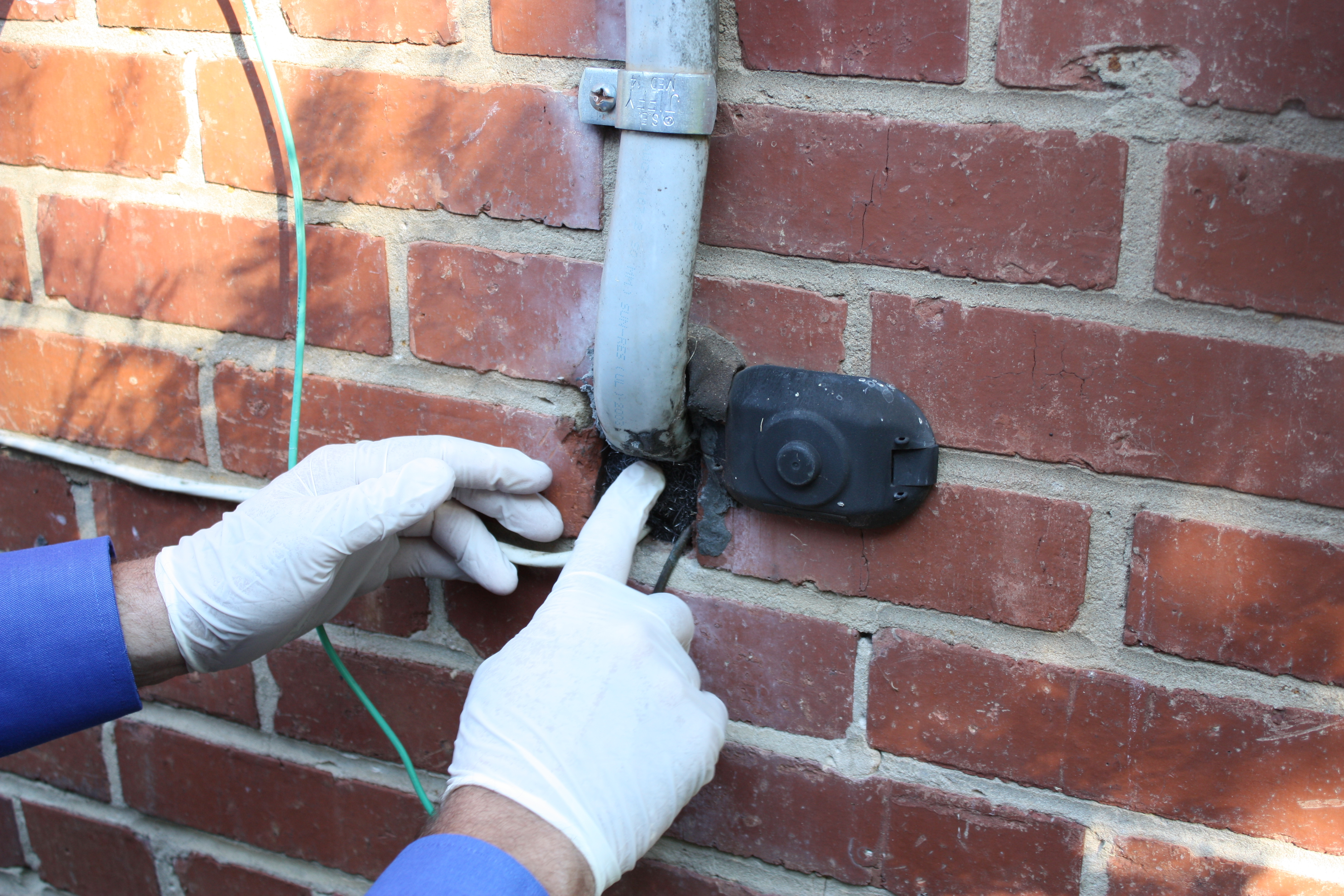Get a free estimate
If you have questions about our services, plans, or pricing we are here for you. Fill out the form below and we will communicate with you by email (and of course provide you with a free estimate).
FEBRUARY 22 2022 /
Mice and rats are a big problem for home and business owners throughout the American Pest service territory.
As temperatures across the region begin to fall, rodents seek shelter in both occupied and unoccupied buildings and structures to weather out the winter months.
One key to a successful rodent abatement program begins with an understanding of the products and materials that pest control companies like American Pest will use to combat the problem.
Norway rats are known to travel on average of 100-150 feet from their nest in search of food and water. This means that rats sighted on your property may be living elsewhere.
Bait stations for rats and mice are an effective tool to control rodent populations on the exterior.

Known in the industry as RBS, the stations are not only tamper resistant to pets and non-target wildlife, but can be placed somewhat discreetly in areas where rodent activity is noted by your pest control professional.
Key features of a Rodent Bait Station:
⭐ Stations are locked to prevent tampering and are weighted down by cement blocks
⭐ Inside the RBS, metal rods secure rodenticide blocks (not pellets which can fall out) to the unit
⭐ Interior label is used for documenting station inspections
⭐ Stations can be used to maintain an area of ¼ mile in radius
So how does the bait station work? Quite simply, it provides a secure environment for which mice or rats can enter and consume rodenticide bait.
The unit should not be confused with a trap, as it allows for rodents to come and go between feedings.
Q: Is it safe for my pet to come into contact or consume a mouse or rat that has died as a result of rodenticide bait.
A: While you may continue to exercise caution, it is safe for your pet to come into contact or consume a rodent that has died as a result of rodenticide bait. The active ingredient in rodenticide bait is digested and absorbed into the tissue of rodents, thereby greatly reducing its efficacy past the point of absorption. It is also important to keep in mind that the lethal dose, according to the Material Safety Data Sheet, is substantially lower for mice and rats.
Q: Leaves, debris and/or snow is covering the opening to my rodent bait station. What should I do?
A: It is important to keep the area around the bait station free from debris, to allow for easy rodent access. Please notify your pest control professional if this continues to be an issue.
Humane traps for mice and rats come in a variety of sizes and types. Multi-catch units are especially useful in high level infestations as the unit is capable of trapping and holding as many as 30 rodents at one time!

Some units are equipped with a see-through panel so that a home or business owner can check the trap between pest control visits.
Key features of a Live Trap:
⭐ Environmentally responsible and easy-to-use
⭐ Allows for trapping and removing of live rodents without having to touch or kill them
⭐ Multi-catch units can be used for high rodent infestations
Q: I’ve caught rodents, now what?
A: Humane traps still pose problems, especially during winter months, which is something to consider before electing this type of rodent control. Between visits from your pest control professional, you can release mice from live trapping units in wooded areas that are abundant with Oak trees, a water source, and at least ½ mile from your home. During winter months, some clients opt for other options.
Snap traps for mice and rats are typically placed indoors in discreet locations away from children and pets. When placed properly, snap traps are effective at catching rodents where they are most active.

It is common for snap traps to be placed inside or beneath kitchen cabinets, behind pantry doors, and in basement, attic and crawl spaces.
Key features of a Rodent Snap Trap:
⭐ Quick-kill spring activated closing mechanism
⭐ Bait pedal for use with bait or nesting materials
⭐ Environmentally responsible and safe to use in and around food prep areas
⭐ Disposable for fast, easy removal
Q: What baits will be used on my rodent traps?
A. A combination of materials might be used, such as peanut butter, chocolate, slim jims, bacon, or nesting materials such as cotton or string.
Q: A mouse is caught, now what?
A: Using a bagged hand, you can now dispose of the entire unit, rodent and all, into your exterior trash receptacle.
Q: The bait was taken, but no rodent was caught. Now what?
A: If resetting your own traps in between visits from your pest control professional, remember to use the least amount of bait as possible. A smudge of peanut butter or chocolate icing is plenty. When too much bait is used, it is easier for the rodent to remove it without triggering the trap.
No rodent control program is complete without an inspection to locate and seal entry points around the home or building.
Your pest control professional will work with you to identify potential rodent entry points in an effort to keep rodents out.

Suspect areas such as around electrical conduit, cable and phone lines, dryer vents, crawl space vents, under and around garage doors and loading docks, will be inspected.
Key features of Exclusion Materials
⭐ Copper wire mesh can be used in and around pipes and wires entering any structure
⭐ Door sweeps can be installed at entry and loading doors
⭐ Hardware cloth can be utilized at vented areas
⭐ Caulk and expandable foam can be used to secure openings as small as ¼ of an inch in diameter